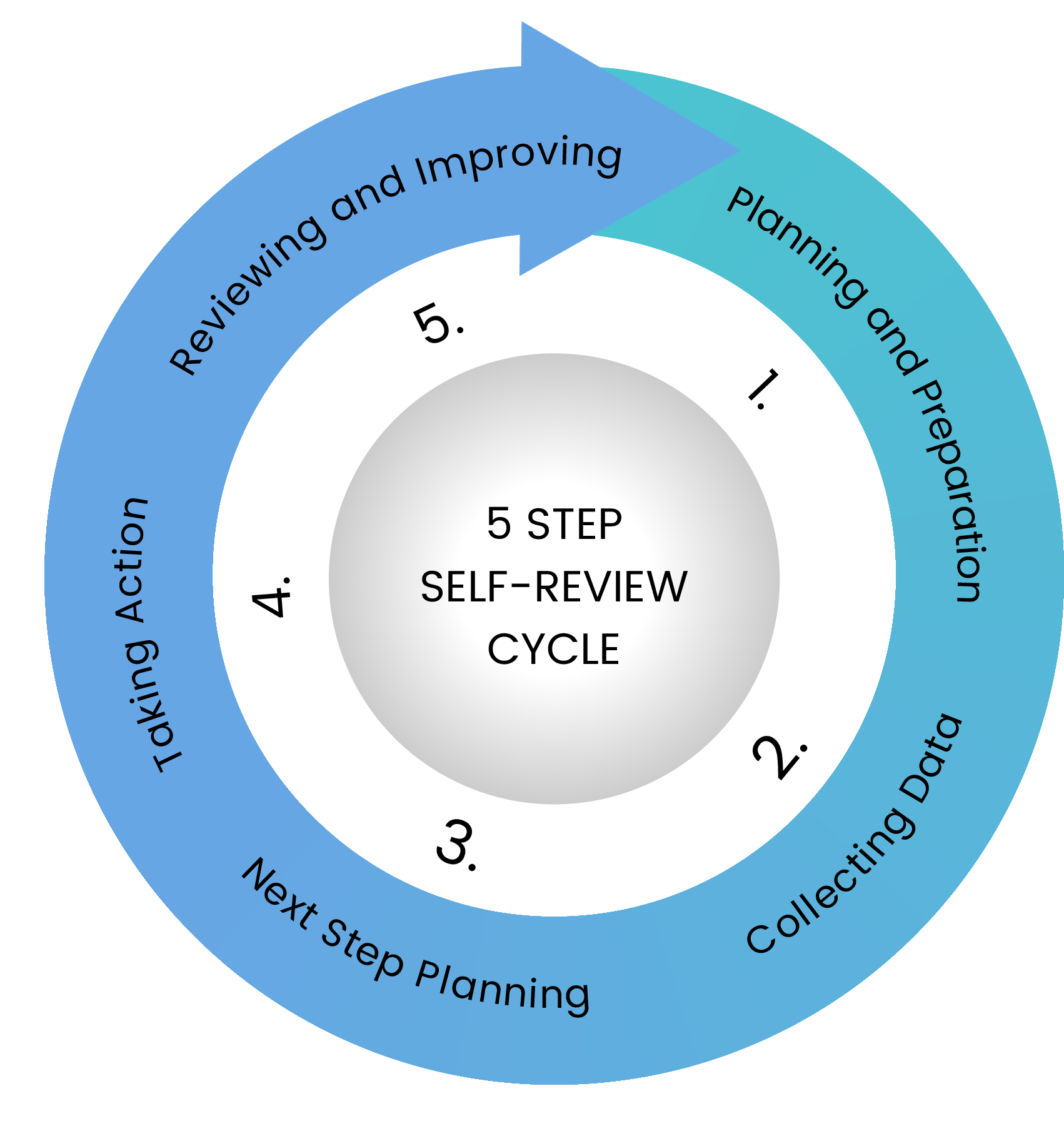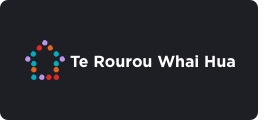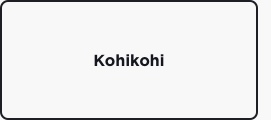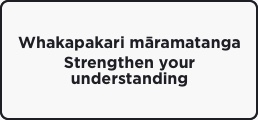2. Support your mahi (Kohikohi)

|
In this section there are tools and resources you and your teams might use while working together in kohikohi. These tools and resources may help you think about the different ways in which you can gather information to understand the strengths and needs of a cluster, school or group, as well as individual ākonga. You may want to encourage teams to think “outside the box” to consider what sources of information could be gathered and from what perspectives. |
||
Deciding on tools and methods for kohikohi |
||
Reliability, validity and fairnessWhen you and your teams make decisions about information gathering tools for particular education settings, groups of ākonga and individual ākonga, you may consider the reliability, validity and fairness of the tools. When considering how reliable, valid and fair tools are you could ask yourself:
Read more about reliability and validity on Assessment Online. |
Read more about this on the The Education Hub. |
|
Assessment for LearningThis guide focuses on informal assessment for learning in the classroom to inform teaching and learning, including selecting appropriate tools for equitable outcomes for all ākonga. It can support you and your teams to review assessment policies and procedures and can be used for ongoing review. You can use this guide to:
Read more about Assessment for learning: Using the right tools and resources to notice and respond to progress across the curriculum. |
||
Tools to support information gathering for clusters, whole school |
||
|
Effective self-review processes ensure there is a systematic approach to improving the school’s learning environment and maximising students' learning opportunities. - Education Leaders |
||
|
Read more about the components of ongoing self review on Educational Leaders. |
||
Self review toolsThe following learning and wellbeing self review tools are designed to be used in whole schools/clusters or with individual/groups of teachers. Self review tools can support you and your teams to gather varied perspectives and identify the strengths and needs within learning environments. This will help with planning universal and targeted supports to enhance the presence, participation, progress and wellbeing of all ākonga. |
||
Wellbeing@schoolThe Wellbeing@School toolkit is designed to support primary, intermediate and secondary schools to engage in a review process. The W@S self review tools explore how different layers of school life contribute to creating a safe and caring climate that deters bullying. |
|
|
Inclusive Practices ToolkitThe Inclusive Practices Toolkit is designed to support primary, intermediate and secondary schools to engage in a review process. The aim of the review process is to support schools to engage in an ongoing journey towards building inclusive practices for all learners (including learners with extra support needs). |
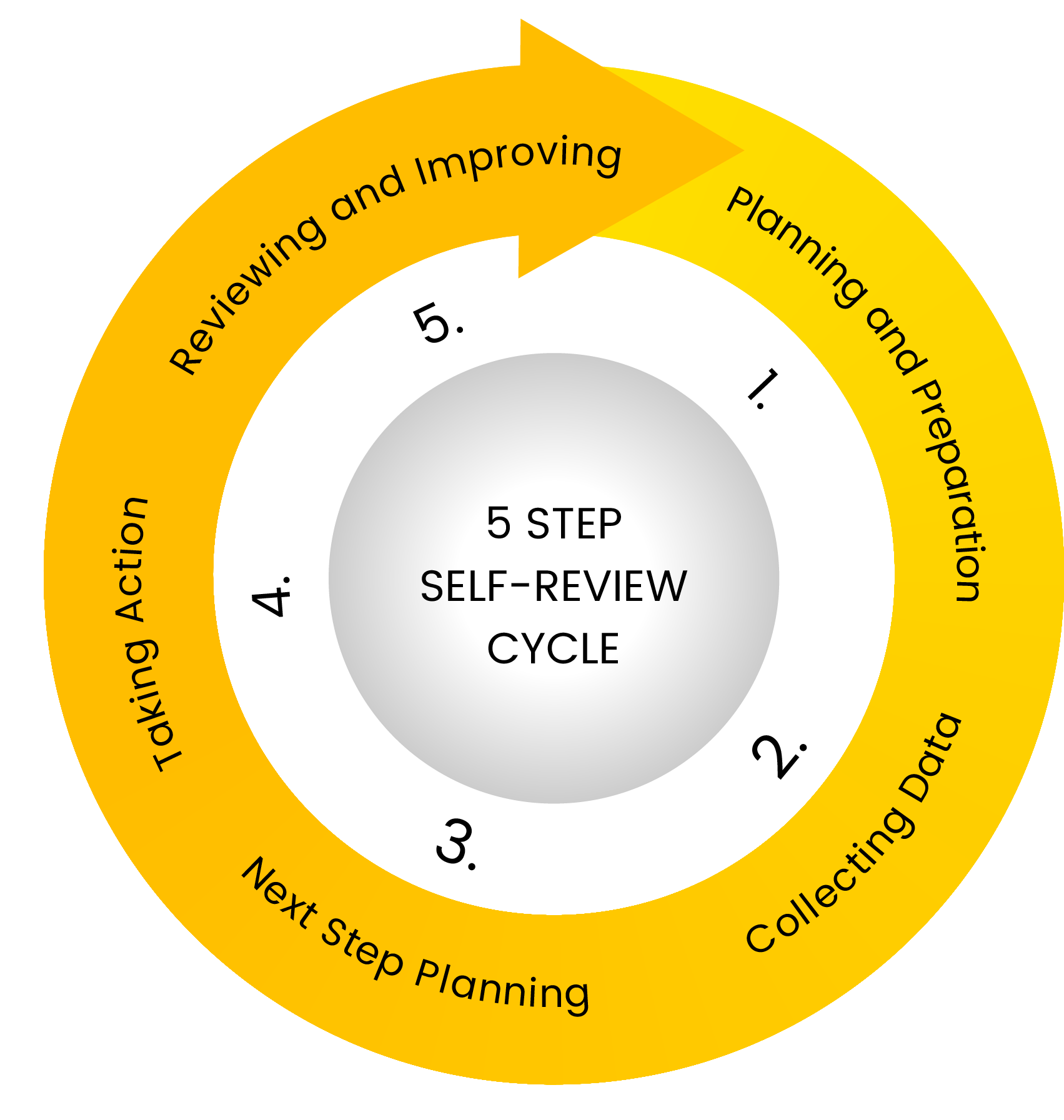 |
|
| Self-review involves deliberate and on-going professional and organisational learning. It uses evidence to find out what is working well, so it can be sustained, and to identify and address any school-based conditions, beliefs, and practices that are limiting student learning. - Inclusive Practices and the School Curriculum | ||
Inclusive practicesThis facilitation module 'How can schools understand where they are at?' is part of the suite of resources on Curriculum Online. This module can be used with teams in schools to review their inclusive practices. It outlines four approaches for self-review and encourages teams to select what best supports their school’s approach to inquiry and purpose for reviewing inclusive practice. See more of the resources on Inclusive Practice and the School Curriculum. |
|
|
Self review tools for more focused kohikohiThe following tools can be used at a whole class, school or cluster level but they are more focused on specific areas of teaching practice, learning and wellbeing. |
||
Teachers and Teacher AidesThe Teachers and Teacher Aides Working Together Self Review tool can be lead by LSCs. The intent of the self review is to:
|
|
|
Teaching for Positive BehaviourThe Teaching for Positive Behaviour Self Assessment tool is part of the PB4L suite. It is designed to support kaiako to reflect on the degree to which their practice includes effective, evidence-based strategies that promote positive behaviour. This checklist combines best practice elements from the Positive Behaviour for Learning School-Wide framework and the Incredible Years – Teacher programme. It also draws on information from Te Kotahitanga and Tātaiako. |
|
|
He Māpuna Te TamaitiThe He Māpuna Te Tamaiti tool is a set of ‘big picture’ questions to support kaiako teams to consider the kinds of evidence that could inform an inquiry into how to support the social and emotional growth of tamariki across a setting. This may lead to environmental and practice changes aimed at strengthening inclusion, engagement, and learning for all. The whole resource is on Te Whāriki Online. Although developed for early learning settings, it has useful and relevant information for junior school teaching in primary education. |
|
|
Te KōreroreroThe tools in this resource examine the extent to which kaiako use effective, evidence-based strategies that foster language learning and development. The tools also support teams to review their oral language environment to ensure that it is supportive and inclusive for all tamariki. |
|
|
Tools to gather the voices of ākonga |
||
| ‘Student voice’ is the intentional collection of students’ thinking and feedback on their learning, and the use of these voices to inform and improve teaching, learning, and school-wide decision making. Collecting student voice should not be regarded as an additional process or requirement – rather, it is an essential source of data that can and should be used to guide next learning steps for students and decisions about content and approaches by teachers and leaders. These decisions might be based in individual classrooms or at a school-wide level, where they contribute to changes in leadership, systems, and structures that affect teachers and students across and beyond the whole school. - The Education Hub | ||
|
While some of the previous self review tools collect the perspective of ākonga, there are a number of other ways in which you can learn about what is important to the learning and wellbeing of ākonga. These tools can help you and your teams gather rich and meaningful information. |
||
|
Read more on The Education Hub about using student voice. See examples on English Online of how several secondary schools have used student voice to inform teaching and learning practices. |
||
Voice is not enoughAs an LSC you can think about how gathering the voice of ākonga can be used in genuine and influential ways. How can what ākonga say and do make a difference to what happens in their learning experiences in their education setting? This is Laura Lundy's model of child participation. It is developed to ensure that ākonga:
Read more about protecting and strengthening student agency on the Inclusive Education website. Read more about encouraging student voice on Curriculum Online. |
Click on image to see in full |
|
Learner profiles and collection toolsLearner profiles and other information collecting templates can help ākonga share with their school what is important to them and what helps them learn. Examples of learner profiles and ideas of what to include can be found on the Inclusive Education website. Download an info sheet on Developing Learner Profiles Rating scales can be a useful way elicit student voice by making statements about learning, classroom culture, wellbeing etc for ākonga to rate. This can become the beginning of further discussions and information gathering. See an example of a rating scale on The Education Hub. |
|
|
Video examples of ākonga voice“10 ways to teach me” – Brigham Riwai-Couch from Evaluation Associates Ltd. on Vimeo. |
||
|
Autism Voices is an award winning, short film created by 12 autistic students to raise awareness of the sensory difficulties in the classroom. |
||
Learning Maps
This example of learning maps involves teachers supporting ākonga to draw pictures of how they see their interactions within a learning setting. They analyse and decide what they would like to grow, develop or improve in the way they are learning, with support from their peers, kaiako and whānau. Mapping, drawing, and talking together builds understanding through meaningful and deliberate learning relationships. (Annan and Wootton https://infinitylearn.org/) |
||
Narrative AssessmentThrough Different Eyes is a website on using narrative assessment for ākonga who may learn long-term within Level One of the New Zealand Curriculum. It is designed to help kaiako and others involved in teaching and learning to notice, recognise and respond to the diverse ways in which ākonga learn. It includes examples of this assessment approach in practice. |
Click on the image to download the guide |
|
Tools to support more specific curriculum based assessments |
||
|
As an LSC you will have access to a range of school based assessments and information gathering tools. The kaiako you work with will likely have careful and thorough information that tracks ākonga progress and achievement within the national curricula. The links below will help you know what is available and what kaiako may be using already. |
||
|
Te Whāriki Online has a section on how assessment makes valued learning visible. Kaiako use assessment to find out what children know and can do, what interests them, how their learning is progressing, what might be the next step, and to identify areas in which they may need additional support. Making Learning Visible is a module on the inclusive practice section of Curriculum Online. This module provides opportunities for teams to examine the characteristics of effective assessment and to explore assessment approaches for ākonga with additional learning needs. |
||
|
Assessment Online has some useful tools and resources to support you in thinking about the types of assessments you and your teams might use in kohikohi. While these tools can be used for understanding needs of individual ākonga, they can also be useful for identifying trends and commonalities within groups and across schools. |
||
|
Assessment resources maps are a resource for schools and teachers to help select the most appropriate assessment tool to suit their particular purposes. They illustrate the year levels and/or curriculum levels each tool is fit for and the most frequently used tools in New Zealand schools for reading, writing and mathematics. |
||
|
The secondary literacy pages on Literacy Online have useful information about understanding ākonga needs and the use of assessment tools. There are a number of assessment tools highlighted in the progress and achievement of literacy page on Literacy Online. |
||
|
While the principles of assessment for learning apply to all ākonga, there are particular resources which have been created to assist in the assessment of students with diverse learning needs. |
||
|
Reflective Questions:
|
||
|
To access resources and links to 'strengthen your understanding' of kohikohi click on the tab below. |
||

